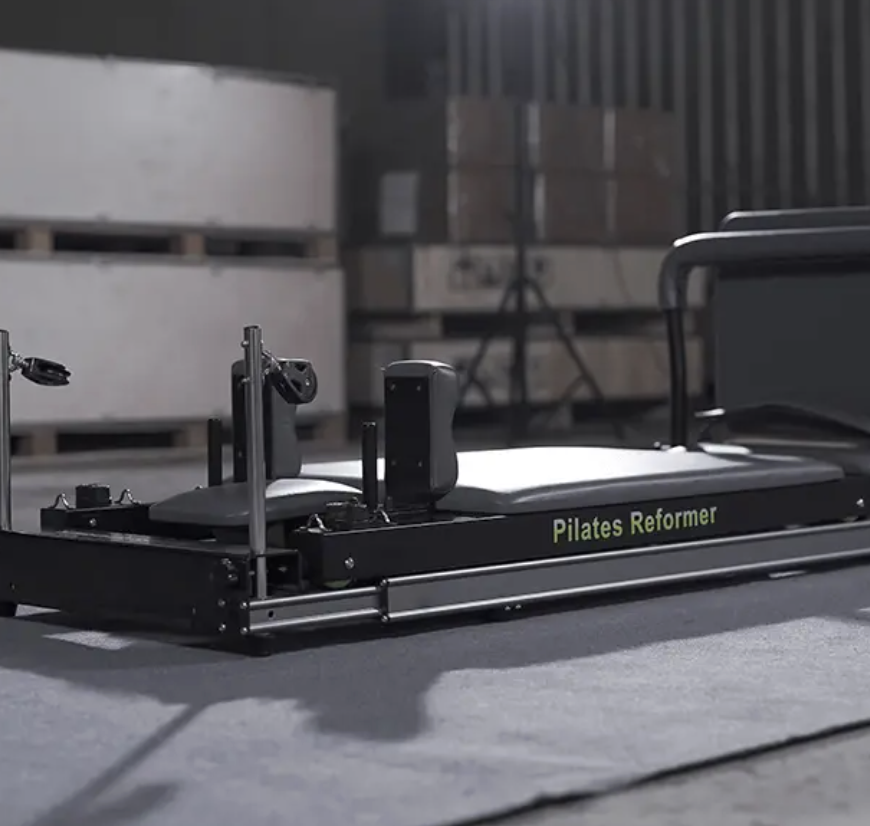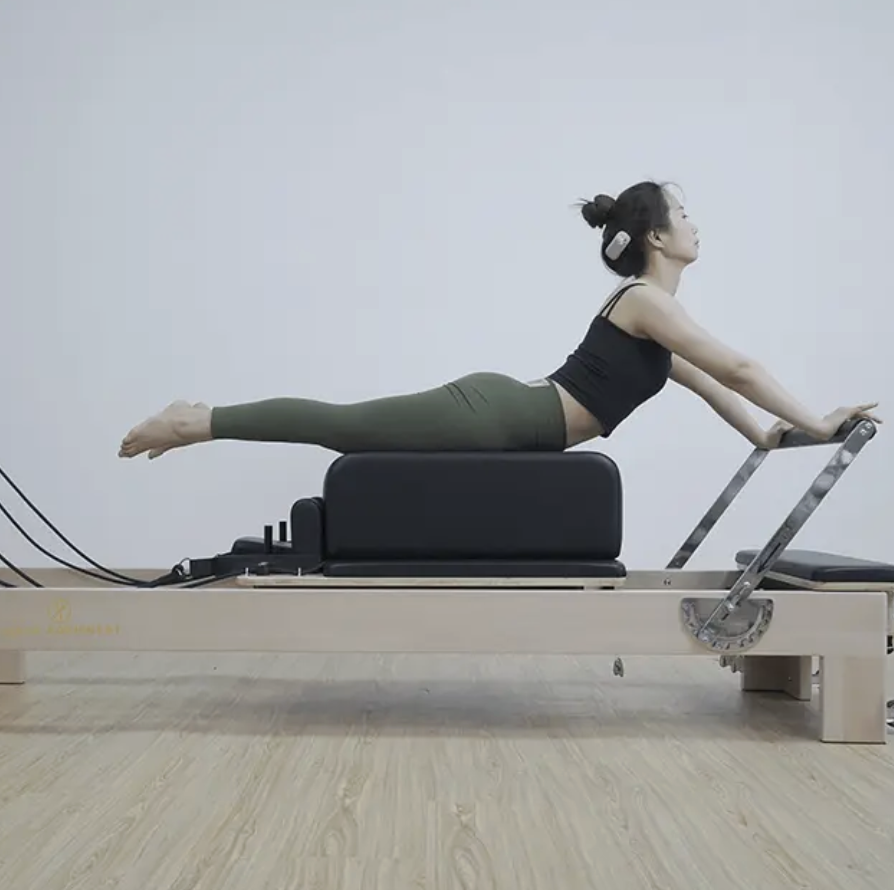T: +86-150-0640-1267
E: susan.liu@jnsenya.com
E: susan.liu@jnsenya.com
Room 708, Y1, Wanda Apartment, No.57 Gongye South Road, Jinan, China (shandong) Pilot Free Trade Zone
Views: 0 Author: Site Editor Publish Time: 2025-09-22 Origin: Site











Carving out space for Pilates at home or running a professional studio often raises the same big question: how much is a Pilates reformer? The answer depends on what type of machine you need, the features it comes with, and how you plan to use it. Let’s break it down step by step.
Reformers can cost anywhere from a few hundred dollars to several thousand. The price mainly reflects build quality, size, and extra features. A budget-friendly model might fit into a small apartment, while a commercial-grade reformer can handle years of daily studio use.
| Category | Price Range | Typical Use Case |
|---|---|---|
| Entry-Level Reformers | $300 – $800 | Beginners, small home spaces |
| Mid-Range Reformers | $800 – $2,500 | Serious home users, light studios |
| Professional Reformers | $2,500 – $5,000+ | Full Pilates studios, rehab use |

Entry-level Pilates reformers are designed with beginners and space-conscious users in mind. These machines are compact, foldable, and lightweight, making them an ideal choice for those who are new to Pilates or have limited space at home. Typically, they are priced between $300–$800, offering an affordable way to explore the benefits of Pilates without a significant financial commitment.
Lightweight Construction: Often made from lighter materials such as aluminum or plastic, these reformers are easier to move and store.
Basic Functionality: They come with limited attachments or spring settings, focusing on the essentials for a Pilates workout.
Portability: Easy to move or store under a bed or in a closet when not in use, making them a practical choice for smaller living spaces.
Entry-level reformers are excellent for testing the waters of Pilates. They provide a basic yet effective platform for building foundational strength and flexibility. For those unsure about committing to a long-term Pilates practice, these machines offer a low-risk introduction to the method.
Mid-range Pilates reformers strike a balance between affordability and quality, with prices typically ranging from $800–$2,500. These machines are a step up from entry-level models, offering a more robust and stable experience suitable for long-term home workouts.
Enhanced Stability: These reformers feel sturdier and more durable, providing a solid base for regular use.
Adjustable Components: Adjustable footbars and headrests allow for a more customized workout experience.
Accessory Compatibility: Compatible with accessories like jump boards and various springs, expanding the range of exercises possible.
Mid-range reformers offer a studio-like experience at home without the premium price tag. They are perfect for individuals looking to deepen their Pilates practice with more advanced features and better resistance systems. These machines are designed to grow with you as you progress in your Pilates journey.
For professional studios, rehab clinics, or serious enthusiasts, professional-grade Pilates reformers are the top choice. These machines are built to withstand daily, heavy use and often include advanced features. The cost can range significantly, from $2,500 to $5,000+, reflecting their high-quality construction and comprehensive capabilities.
Commercial-Grade Materials: Constructed from commercial-grade aluminum or wood frames for maximum durability.
Customizability: Maximum adjustability to accommodate different body types and exercise needs.
Smooth Operation: Smooth, quiet carriage rides ensure a comfortable and enjoyable workout experience.
Compatibility: Full compatibility with add-ons and upgrades, future-proofing your investment in Pilates equipment.
Professional reformers deliver both durability and performance, making them a worthwhile investment for studios and serious practitioners. They offer a high level of adjustability and a smooth, quiet operation that enhances the workout experience. With extended warranties and the ability to add various accessories, these machines provide a comprehensive solution for those looking to commit fully to Pilates.
A reformer’s price isn’t random—it depends on several key elements:
The material used for the frame significantly impacts the cost. Traditional wooden frames offer a classic aesthetic and are often preferred for home settings. They provide a sturdy and warm feel to the equipment. On the other hand, aluminum frames are modern, lightweight, and more durable. They are ideal for commercial settings where frequent use and portability are important factors. The choice between these materials can vary the price by several hundred dollars.
The resistance system is another crucial factor. High-quality springs are essential for providing consistent and smooth tension during workouts. These springs are designed to last longer and offer a more reliable resistance, which is vital for effective Pilates practice. Cheaper springs may wear out quickly and can affect the performance of the reformer. Investing in a reformer with superior springs ensures a better workout experience and longevity of the equipment.
The size and portability of the reformer also play a role in its pricing. Foldable designs are more affordable and convenient for storage, especially for those with limited space at home. However, they may sacrifice some stability compared to larger, non-foldable models. If you plan to use the reformer frequently and require a stable platform, a larger, more robust model might be worth the extra investment.
Additional attachments can significantly increase the cost. Jump boards, towers, and reformer boxes are popular add-ons that enhance the functionality of the reformer. These attachments allow for a wider range of exercises and can cater to more advanced users. While they add to the overall price, they also provide greater versatility and value for those looking to expand their Pilates practice.

Home reformers: More compact, affordable, and easy to store. Perfect for personal use and small workouts.
Studio reformers: Larger, heavier, and highly adjustable. Built for group classes, rehabilitation, and long-term use.
The choice depends on how often you’ll use it and what your fitness goals are.
Many people see them as an investment in health. Reformers can replace years of studio classes, saving money long term. High-quality machines often keep their value, meaning you can resell them later if needed.
Benefits include:
Strengthens the core without heavy strain
Improves posture and balance
Offers hundreds of exercise variations
Suitable for beginners and advanced users
Home reformers usually cost $300–$2,500 depending on features and build quality. Foldable entry-level models sit at the lower end, while mid-range reformers with smoother carriages and more adjustments cost more.
High-quality materials, precision engineering, and long-lasting resistance springs drive the cost. Studio reformers must handle daily use, which means manufacturers use stronger frames and premium components.
Yes. Used reformers are often 30–50% cheaper than new ones. However, check the condition of springs, ropes, and carriages before buying. Replacing worn parts could add unexpected costs.
If you plan to practice regularly, buying one could save money over time. Studio classes may cost $20–$40 each. Owning a reformer means you can practice daily at no extra cost.
So, how much is a Pilates reformer? Prices range from $300 for entry-level home models to over $5,000 for commercial-grade equipment. The right choice depends on your budget, workout goals, and how often you’ll use it.
For anyone serious about Pilates—whether at home or in a studio—a reformer is more than just a piece of equipment. It’s an investment in strength, mobility, and long-term health.
At Jinan Senya Equipment Co., Ltd., we offer a wide range of Pilates reformers that cater to both beginners and professionals. Our equipment is designed to enhance your fitness journey, providing durability, versatility, and exceptional performance. Whether you are looking for a home model or a commercial-grade reformer, Jinan Senya Equipment Co., Ltd. has the perfect solution to meet your needs.